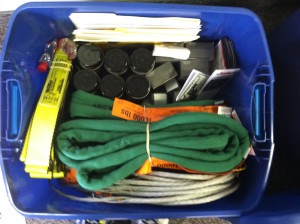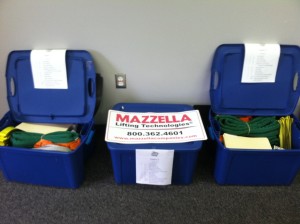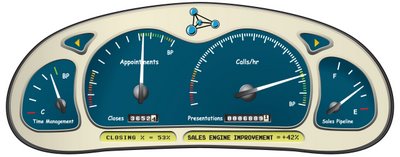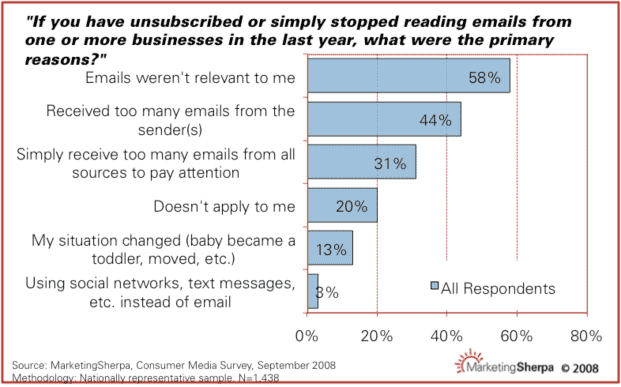What you need in the field for a successful Sales Blitz!
In a Sales Blitz every door is an opportunity and if your salespeople aren’t properly equipped they can miss it.
How to Organize for Success in a Sales Blitz!
Blitzes can be a source of HUGE immediate sales and long term changing of your business normal but only if they are planned and handled right.
If your reps are spending their time driving around lost the company loses. Set them up for success and have a solid plan, and it all starts with the territory they will be calling on.
Sales….. Like Lightning
“How can we achieve a near-term sales increase combined with long-term sustainable revenue growth?”
This is a question that hangs in the air during virtually every conversation between owners, C-Level and Sales Management. One of the tried and true methods to achieve at least half of the equation is to conduct a sales blitz. The trick is how do you morph a temporary sales boost into the “new normal”?
A sales blitz is designed to fulfill the urgent need of increasing sales pipelines immediately. And most sales organizations know the basic “flavors” of blitzes with formats being designed for, at best, impermanent returns. I say both goals of an immediate sales bump and establishing the “new normal” are possible.
It’s a challenge melding lead generation, continual development training and motivational sales meetings, I grant you, but if you run a Blitz using this system be prepared for a revenue growing, “sales climate changing” event.
 S.E.T.U.P. your team for success
S.E.T.U.P. your team for success
Strategy
This step should start minimally 60 days before the blitz. Map out EVERY detail from the initial touch, phone dial, live visit, all follow-up and ongoing relationship builders and more. At the planning meeting ask these questions:
-
What market/area are you attempt to penetrate?
-
What is the goal(s) of the blitz? Short term, Mid Term and Long Term?
-
How can you warm up the market/area you will be blitzing?
-
What will you use to warm them up? What frequency? What platform?
-
What products fit/are most desired by this market?
-
What vendors should you team with?
-
What should your teams have with them? Brochures? Giveaways?
-
What will be the competition’s reaction?
These questions are a great starting point but you have to go deeper yet. We all know long term sales success is about the grind. Doing the little things everyday that build best practice habits that ultimately pay off. It’s the same here only we need to “microwave” the process a bit.
Education
Day 60 should begin with teaching of an effective lead generation system and every system is made up of 3 things, tactics, strategy and learned skills.
Many of the tactics and strategies that need to be adopted are here https://matriximpact.com/site/?p=1125.
Your team also need SPECIFIC skills. Those skills need to be practiced in real-life simulations tightly tied to the reality they will experience. Here are 5 of the skills that will be required of anyone participating in the Blitz.
-
Client research and its application
-
Tele-Sales: Warming up the drop-in
-
Lobby Intro: Getting past the Gate Keeper or at least gaining needed info
-
Benefit Value Discussion: Setting the hook to continue the discussion
-
Facility Walk-through Technique: How do you maximize contact with the right person?
-
Wrapping up the visit: Very few drop-ins will result in a sale. The real goal is increase and expand in your sales pipeline
There should be a regular schedule of training leading up to the Blitz event. Refresher classes, reviews and Blitz day reminders for everybody involved. This is why there needs to be a Blitz QB. One who can coordinate information, learning and distribution for all the Blitz teams.
Tools
There are many tools needed for a successful Blitz. Call Template, all lead generation letters, impact touches, pairing maps, company intelligence, handouts, giveaways schedules and more, all customized for your business and for the goal of your Blitz.
The key is to be prepared and start the assembling of your tools sooner rather than later.
Users & Interface
Everything management does HAS TO BE hands-on. Management needs to be the great guiding hand in the structure of the Blitz but it also needs to be a participant during the Blitz days. I have had everyone from Middle Managers to Vice President’s of Sales to Owners come up to me after a Blitz and effusively say “John, thank you for making sure I was on a Blitz team”.
Think about it. They get out of the office routine of meetings and problems and get to spend minimum 2 days with sales people and customers. They find out what the ground troops do on an everyday basis and what has changed over the years. They hear first hand customer’s issues and concerns. It can reinvigorate the most curmudgeonly of management and this isn’t even the best reason.
When a prospect/customer is introduced to the Vice President or Owner the look on their face is priceless. I mean WOW, the VP or Owner took time out of her/his day to come and visit. Few gestures have a greater customer service impact than this.
Sales people MUST take ownership as well. They have to be involved in all strategy discussions. There a a multitude of tasks that need to be divvied up among the sales team. A sales person has to be the in-office Blitz QB. This is a critical position. Their job is to coordinate all activity. They have to stay in touch with the teams and provide updates. They are also troubleshooters as opportunities or problems come up. Depending on the size of the blitz you can have as many 2 or 3 QB’s to ensure you have proper support.
The bottom-line: from ownership to front-line sales, everybody plays a crucial role in the execution of a successful Blitz .
Performance
This is what it is all about! You need to GUARANTEE your team is prepared, practiced and energized. If you do you will be SETUP! to have a successful Blitz day(s) and to continue your success throughout the year.
After your strategy meeting(s) you need to conduct
-
Weekly update meetings: No longer than 30 minutes but it is CRITICAL to make sure everyone is completing their assigned duties, remember there is no small job when executing a Blitz.
-
Minimum of 3 education sessions: Would you rather your salespeople practice on their customers or with you?
-
Blitz Kickoff: Night before the Blitz you cover every detail and logistic necessary and take all questions. Team & territory assignments, Car stock, Vendor presentation and motivation. Make sure you have daily goals and prizes for performance as well.
-
Blitz Day: Everybody rallies at central location, unless territory demands call in. You go over any final pieces and send them off to kick BUTT.
-
Blitz Day Re-Cap: Everybody reconvenes at central location. You cover the results, hand out daily prizes, share successes, what worked and what didn’t then break for dinner.
-
Blitz Wrap Up: Similar to Re-Cap. You also need to triage all leads and assign to proper parties. Agree on timing of followup meetings to check progress of leads, generally think 2 weeks out, a month out and 90 days out. This will allow you to see “the toothpaste getting squeezed through the tube”.
Below are the Performance results from a tightly run, well executed Blitz.
You need to lay the ground work for continued nurture prospecting that leads to a steady stream of sales revenue for the foreseeable future. This process focuses on installing habits in your sales team and helping to either create or augment a lead generation system. When executed correctly, a Blitz will bring in immediate sales dollars and set the tone for ongoing success within your current selling environment.
A Blitz is not a band-aid type solution to improving sluggish sales. It’s an organic, holistic method to improving today’s sales revenue AND your overall sales atmosphere, establishing a “new normal” to your team’s everyday sales activities and results.
What are the Metrics that Matter?
Most Sales Departments stink when it comes to tracking their numbers. The question upper management ALWAYS asks is why? My two cents; we don’t know the most important numbers to track and we don’t realize how important they are to our entire selling effort. Well, those excuses end today!
Indicators
The first area that we need to clear up is the difference between trailing and leading indicators. Trailing indicators refer to metrics that happen as a RESULT or in the past. Number of sales closed or total dollar amount closed are examples of the trailing variety. Leading indicators are what foretell objectives and what results will be in the future. The activities that a sales person performs on a daily basis, such as phone calls or appointments, are examples of leading indicators.
We always need to know how many and how much business has been closed (trailing) but we can’t control the actual closing of the sale. That is why we can never lose sight of the activities (leading) it takes to fill the pipeline and, more importantly, directly affect the closing of the sale. This is crucial to short and long term forecasting accuracy and critically more important to overall SALES SUCCESS.
Leading Metric Indicators
I first focus on the BIG 4 of Leading Metric Indicators (LMI’s): Calls, Discovery Appointments, Presentations and Closes. These are pillars of a sale that will tell you the overall picture of what is working, why it is working and what needs to be fixed.
The next LMI’s that I track are more descriptive of the sales reps everyday work.
- How many leads (non-qualified contacts) are they working on?
- How many opportunities (qualified contacts in the buying cycle) are they working on?
- What type of accounts are the reps calling on?
- What is the job function of their main contact?
If the BIG 4 gives you the overall picture, when you drill down to this level you uncover more of the texture in the everyday activities of your sales team. Not just the raw numbers but WHY you are getting the raw numbers. When we understand both sets of LMI’s and their conversion rates it helps us to more accurately predict closing rates in the near and long term.
Trailing Metrics Indicators
I always track total number of closed sales and total sales dollars. They are important and necessary to measure where we have finished historically, yet it always amazes me what sales management forgets to measure in the Trailing Metric Indicator (TMI) category.
A.U.S.P. or average unit selling price is the total sales dollars divided by the total number of sales. For example if total sales dollars are $100,000 and total number sales are 10 your A.U.S.P. equals $10,000. Knowing this number tells you how many sales it will take to hit your objective. This TMI is key to planning your goals and objectives throughout the year.
The final TMI I track is Average Velocity of Sale or the A.V.O.S. This is the average time from when a lead becomes an opportunity to when it converts to a sale. Having the handle on this metric allows you to realistically plan WHEN your business is going to hit.
Wrap Up
12 chapters of data making up one book; lose one of the chapters and you wonder how and why things are happening. Lose two chapters and the story starts to sound nonsensical. Lose three and you wonder why you started reading the book at all. 12 categories of data when monitored and measured can radically affect your sales team’s short and long term success and viability.
Sure it takes time and getting sales to record their info is difficult. Keeping up with the numbers is a job in of itself. I have heard all of the excuses before. I leave you with a question. If you could produce a set of numbers telling you how to improve, what to improve and when to improve your sales results wouldn’t you want to know them and wouldn’t you do everything in your power to track them? Yea, I don’t know either…
Relationships, Slips and Dips
I was at a customer’s last week starting to dig into the Strategy Module for a S.I.T. Blitz we will be conducting the 2nd week in September. Working with the salespeople, we always go through a series of questions to understand their perception of the suspect/prospect/customer (SPC) dynamic which is so crucial when planning for a successful S.I.T. Blitz.
One of the key factors is knowing their standard for SPC communication in terms of frequency. During the course of questions one salesperson chimed in and said “I keep in touch with my suspects and prospects 2x a year, any more than that and I think it would appear pushy.”
Well after the black cloud and threat of lighting inside the building passed I asked him how often does he talk to his best friend? He said probably 2 times a week. Then I asked how often did he call his wife when they were dating? He said minimum 4 times a week. Then I asked him if he considered his relationships with his contacts as solid and he said yes, emphatically, I might add.
So I think you know where I was going with this line of questioning. My final question to him was how many times has he called one of his contacts only to find out that his contact person wasn’t there or there had been a drastic change in the company. His answer “John, more times than I can count,” and therein lies the ‘problemo’ my sales friend.
Believe it or not this happens to me about once a month; a salesperson who understands staying in touch with friends or girlfriends, but doesn’t have a clue what it takes to maintain a successful business relationship. Strangely enough, these same sales people will argue, ‘till blue in the face, they have a good feel for their customers.
I call the first level of this problem Relation-Slip behavior. The sales person “thinks” they know how to stay in touch with a contact. The problem is what they “thinks” has nothing to do with the facts, needs and wants of the suspect/prospect/customer so what winds up happening is a deepening chasm develops between sales and contact with sales being quite oblivious to it. There is a ALWAYS correlation with a drop in sales but the sales person is stuck scratching their head and wondering why this is happening to him.
The next level DOWN is Relation-Dip behavior. The sales person here doesn’t have a clue how to stay in touch with their contacts. They will never admit they have a problem, so they go the other direction and MINIMIZE contact to the point of neglect. You see, in their mind, by not “bugging them” they are maintaining a good relationship. These sales people are so afraid of experiencing the UGH Factor that they will stay away from the suspect/prospect/customer. My question is “If you stay away for long periods of time how will you know when they have become a ripe prospect?” Insert collective silence or righteous indignation ‘here. Then you add the precipitous drop in sales and you have yourself a major issue.
Like any problem in sales early recognition is key. If you are a sales manager WAKEUP! You should be tracking not just their sales production but their lead generation activities. Either one should give you enough of an alert to intervene before the behavior jeopardizes their career and your quota attainment.
If you are a sales person WAKEUP! Your sales are down! Either you don’t spend enough time staying in touch with your customers or you are doing the absolute WRONG things. You have to be self aware enough to say “I have to change what I am doing or this sucker is going down!”
All righty then…. that’s it for today! Next post I will be talking about the solution to Relation-Slips and Dips and the changing nature of the sales contact process.
Until then remember “You can either make sales or you can make excuses but you can’t do both…” I’m outta here!
If you want more information about the S.I.T. Blitz and how you can have a “revenue raining, climate change” experience at your please call Matrix at 216 347 6729 or go to buildyoursalesmachine.com for more details!
“I Don’t Know Where We’re Going, But We’re Making Great Time!”
One of my favorite euphemisms for ‘man’ not wanting to ask for directions. Unfortunately, it is also true in the sales world. We all want a productive lead generation program, but most of us aren’t willing to invest the time and resources into it.
Lead generation, just like driving to the Grand Canyon, needs to be thoroughly mapped out BEFORE you start the journey. You have to know NOT JUST where you are going, but what is along the way, what does progress look like / can you measure it and you have to be able to answer one of the great questions of our time “WHAT IF?’
Continuing our discussion of S.I.T. Lead Generation, I will be discussing what kind of “map” you need to follow for lead generation, what do the “sign posts” along the way look like and give some samples to use in your sales efforts.
Remember, lead generation is not ONLY for new contacts, but for existing customers as well. We will be exploring how to Stay In Touch with ALL contacts in a way that will demonstrate your dedication to customer service and differentiation from your competition.
The Road Ahead
There is a psychological concept called Self Efficacy. Even when something seems impossible, it is the strength of our belief that makes success possible. The absence of this belief guarantees failure. A strong belief in the mission fuels our ability to focus, put forth effort, and persist. Believing allows us to see the goal (continue in the face of daunting adversity) and break the goal down into more manageable objectives (one evolution at a time). If the evolution is a cold call, it can be broken down into even smaller objectives such as asking good questions. Believing allows us to seek out strategies to accomplish the objectives. Then, when the call is done, move on to the next evolution. Thinking too much about what happened and what is about to happen will wear you down. Live in the moment and take it one step at a time.
Self Efficacy is EXACTLY why we have to keep in mind all reasons this process is SO IMPORTANT.
We want
- to DECREASE time in the sales cycle and INCREASE closing percentage.
- to remove the “Ugh Factor” from our phone calls and “warm up” our cold calling.
- to INCREASE our average sales size.
- to receive that “magic call” from contacts saying they received our information and THEY want to talk to us (yes this will happen with this system).
- to have a REAL reason to call our contact and NOT be stuck saying “I just wanted to…”
- to be a THOUGHT LEADER! Somebody our client turns to when they have questions because we know they won’t be in the buying cycle all the time. Sometimes they just need some info and we want to be the providers of that information.
5 Steps for S.I.T. Scheduling
1) Classifying your suspects, prospects and customers is critical. Not all contacts are equal and you can’t treat them as equal. You want to personalize your touches as much as possible and the variables you must take into account for that are:
- newly found or currently existing in database
- industry/industries that you sell into
- positions titles and responsibilities by position
- buying cycle
- size of business (revenue or employee)
- Active and Dormant Needs (see description in post at link)
All of these factors are crucial because they will all have their own built in time frames and predilections and they ALL must be taken into account.
2) After you have classified all contacts you must perform what I call ‘Opportunity Research’ using LTLR (see description in post at link). You have to know everything you can about all these factors and how they effect your contacts. Using ‘Opportunity Research’, many times you will further stratify your contacts leading to even MORE personalization and the possibility of deepening the relationship, ALL GOOD THINGS!
‘Opportunity Research’ will also be different depending on the above variables. You will invest more time in research for some opportunities opposed to others, it only makes sense to prioritize your time, you only have so much of it. A word of caution though for the previous statement, don’t get lazy just because an account “looks smallish.” Run out “ALL your ground balls” and do your research you never know what may be lurking behind door number 2!
3) We have classified and researched our contacts now we can put them into a schedule of touches (click here to see descriptions of touches). Newly found and existing will always be handled differently (at least until the newly found are brought into the cycle). Click this link to see an example S.I.T. Schedule. Customers also need to be touched differently. They should see the ULTIMATE in customization. You should know these folks inside and out, thus they have the most individually personalized touch system possible. Even if your product/service is a one time purchase and you have NO chance of ever selling to that customer again KEEP THEM IN THE TOUCH PROCESS. It is customer service 101 and you never know when they will have a reference for you.
4) Monitor, Measure and Modify: Always know what is going out, to who and when. You don’t want to be caught flat footed if a customer calls to thank you and you don’t have the foggiest why he is doing it. Always know the ROI for your efforts. This knowledge will help you to spend money on the RIGHT areas, not just any area. Always improve your efforts whether it is the timing, the content or delivery. If you are getting a high rate of call ins ask why? If you are not getting a high enough click through rate ask why? ALWAYS LOOK TO IMPROVE YOUR RESULTS!
5) Don’t STOP EVER! Once you start this process you can never stop it. Aristotle once said “Nature abhors a vacuum.” If you are providing consistent, relevant content, your contacts will begin to look forward to it. If you stop for any length of time, I PROMISE YOU, your contacts will find someone else to provide them content and that person’s name is COMPETITOR!
That was a lot of info for today. Let’s take some time to process it and give me a call or shoot me an email if you have any questions. Next time in the Forum we wrap up S.I.T. Lead Generation and lay the ground work for your next step on the road to sales success!
Until then remember, you can either make sales or you can make excuses but you can’t do both!
Have you or your sales organization ever participated in a Sales Blitz?

WHAT IS A SALES BLITZ?
We have created a one of its kind revenue growing, “sales climate changing” event. A melding of lead generation, continual development training and motivational sales meetings called the S.I.T. Blitz®.
Archives
- May 2018
- November 2016
- June 2016
- April 2016
- March 2016
- February 2016
- January 2016
- February 2012
- January 2012
- December 2011
- October 2011
- August 2011
- July 2011
- June 2011
- May 2011
- April 2011
- March 2011
- February 2011
- July 2009
- June 2009
- May 2009
- August 2008
- June 2008
- May 2008
- April 2008
Categories
- A-Players
- Best Practice
- Change
- Cold Call
- Communication Skills
- Continual Development
- Critique Session
- Customer
- D.I.G.
- Drive
- Firing
- Guts
- Handling criticism
- Hiring and Assessment
- Hiring Dashboard
- Human Resources
- Intelligence
- interview questions
- Interviewing
- interviewing sales superstars
- Lead Generation
- Leads
- Motivation
- Naturally Curious
- New Contact Touches
- Position Contracts
- Proposals That Sell
- Prospects
- Reference Checks
- S.I.T. Blitz
- S.I.T. Nurture Prospecting System
- S.I.T. Touch
- Sales 3.0
- Sales Blitz
- Sales Management
- Sales Superstars
- Simulations
- Skill Sets
- Staffing
- Suspect/Prospect/ Customer Dynamic
- Suspects
- Talent and Traits
- Termination
- Uncategorized












